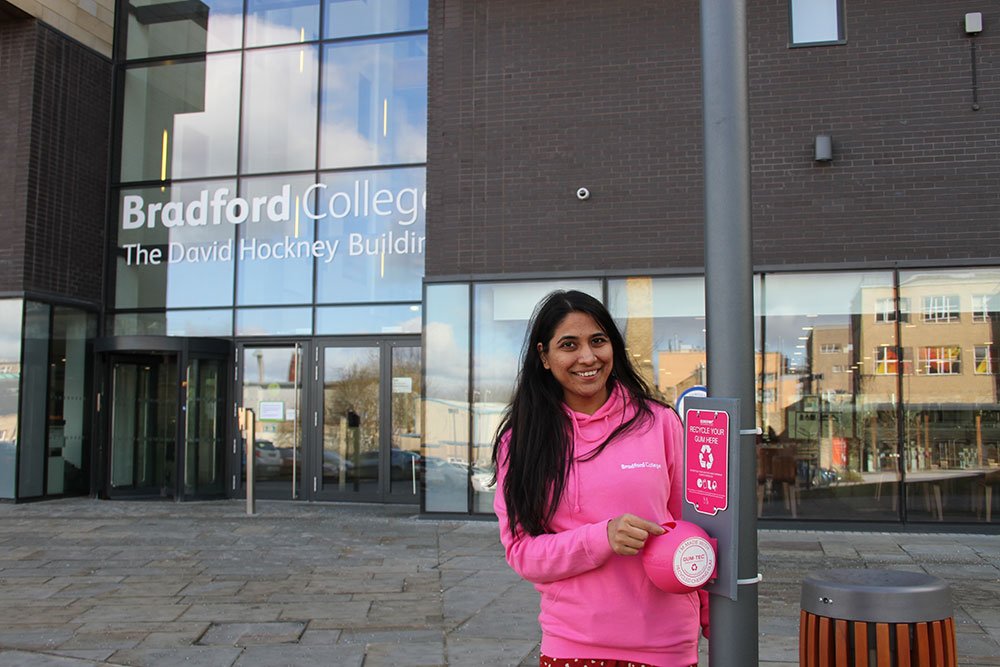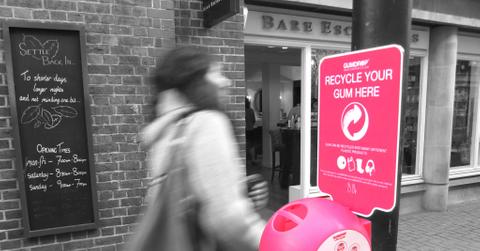'Gumdrop' Recycles Used Chewing Gum Into Useful New Products
Chewing gum is one of the most common products that we throw away or, even worse, throw onto sidewalks and streets. Gumdrop provides an easy way to recycle it, using the polymer inside of the gum base to create new products.
Updated May 25 2019, 4:24 p.m. ET
In the United Kingdom, chewing gum is only thwarted by cigarette butts in terms of the most common street litter. Over $200 million US is spent to clean up the discarded gunk, and to fix this issue, British designer Anna Bullus had an idea to turn the gum into something useful. Using the synthetic rubber in the base of chewing gum, waste is turned into products like shoe soles and coffee cups.
That specific material in the gum base is called polyisobutylene, which is a type of polymer. Also known as “butyl rubber,” a unique trait of the material is that it’s the only rubber that can hold air for a long time. This is why it’s commonly found in products like bicycle tires and basketballs. Even after chewed many times, this material in the gum is still useful.
Instead of scraping gum off sidewalks and roads, Bullus created an easy way to discard waste with “Gumdrop” bins. These pink containers are also made out of gum and they’re hung at head-height on trees and signposts. Each of them contain a message that explains that gum waste is reused to make new products.
Bullus collaborated with a local recycling plant that takes out other waste like paper and gum wrappers before grinding the gum with other polymers. About 20 percent of the chewing gum is used in these recycled products. For example, 42 pieces of gum were used in the process to make a plastic, reusable coffee cup.

8,000 students and faculty at the University of Winchester observed Gumdrop’s effectiveness. 11 bins were hung around campus and it gave away coffee cups made out of gum waste for incentive to use it. After they were installed in a year and a half, the university saw a decrease in litter. An airport also ran a three-month trial and saw over an $8,000 US decrease in cleaning costs.
"Students would give the cup a sniff to check it didn't smell of mint or bubble gum," Liz Harris, the university's environmental officer, told the BBC. "It's because so much of the chewing gum sold on the high street is a polymer [so it] can be used to make new products. When people get it, it's a really nice moment."
Even though the United States hasn’t imported the process yet, the Wrigley Company has given financial support to Bullus’ project. Wrigley, now owned owned by Mars, is based in Chicago, Illinois, and is the largest manufacturer of gum in the world. They also stock their UK factory in Plymouth with additional gum waste.
"Gumdrop is a really creative and innovative way to get people responsibly disposing of their gum and binning it,” Alex Hunter-Dunn, a Wrigley spokesman, told the BBC. “We fundamentally believe that behaviour change is the only long-term sustainable solution to tackle the issue and we are very much behind that."
